How physics falls apart if the EMdrive works

Either momentum truly is conserved and this isn’t a reactionless drive… or else.
“The law of the conservation of momentum is the basis of the static thrust equation, the law of the conservation of energy is the basis of the dynamic thrust equation. Provided these two fundamental laws of physics are satisfied, there is no reason why the forces inside the resonator should sum to zero.” –Roger Shawyer, clearly misunderstanding the theory of forces
Imagine a rocket that works without fuel. You pump energy into it and away you go, but there’s no thrust coming out the other side, no exhaust, no waste product and no consumable fuel. It’s the ultimate defiance of Isaac Newton: claiming to have an action without an equal and opposite reaction. And yet, inventor of the EMdrive, Roger Shawyer, claims to do exactly that. Not only does he say that his device works, he claims that anyone can build one and verify it for themselves. At Eagleworks laboratory, NASA scientists attempted to do exactly that, and just published their findings in a peer-reviewed journal. The results? They verify that the EMdrive works as advertised.
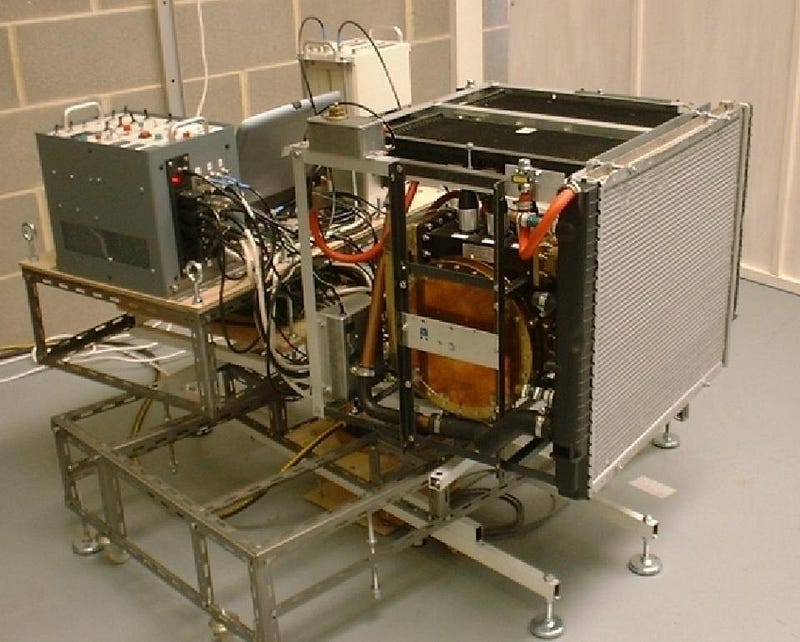
If the EMdrive truly is a space engine that has an action with no reaction — you pump power into it and get thrust with no discernible exhaust — then this is the largest revolution in physics since Isaac Newton. Newton’s three laws of motion have stood for hundreds of years:
- An object at rest remains at rest and an object in motion remains in motion unless there’s an outside force acting upon it.
- The force on an object equals the rate of change in its momentum over time. (F = ma for non-relativistic systems.)
- And for every action there’s an equal and opposite reaction.
That third law is known as the conservation of momentum, and is true not only in Newtonian mechanics, but in electromagnetism, General Relativity and all of quantum field theory. It’s the one law that Newton came up with that still holds, with no exceptions, today.

But if the EMdrive is truly reactionless, then Newton is wrong. Also, Einstein is wrong, Maxwell is wrong and all of quantum physics is wrong. There’s a fundamental symmetry that causes momentum conservation: translational symmetry. It means that if my system is over here, at a certain point in space, it should obey the same laws as if it’s over there, at a different point in space. But if momentum conservation isn’t truly fundamental, then translational symmetry cannot be a good symmetry of the Universe. In other words, there must be a preferred location, where the laws of physics are different in one location than others. The laws of physics, all of a sudden, depend on position.
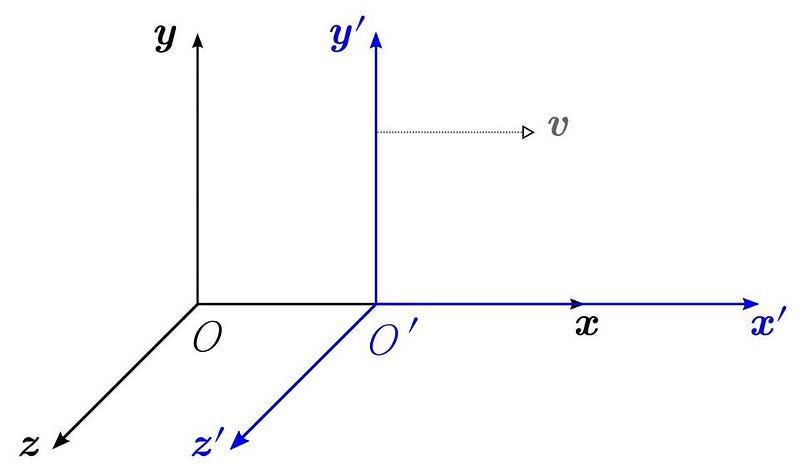
It means that the fundamental principle of relativity is wrong. It means that if you’re in an inertial reference frame, you can see an entire system’s momentum change over time. Moreover, it means that observers in different reference frames will see violations of momentum conservation by different amounts. If you violate momentum conservation by different amounts, you violate energy conservation, too; energy is not only not conserved, it’s not conserved by different amounts in different reference frames. The most sacred law of particle physics — one that has been observed to apply to every system and every interaction set in history — would be busted.
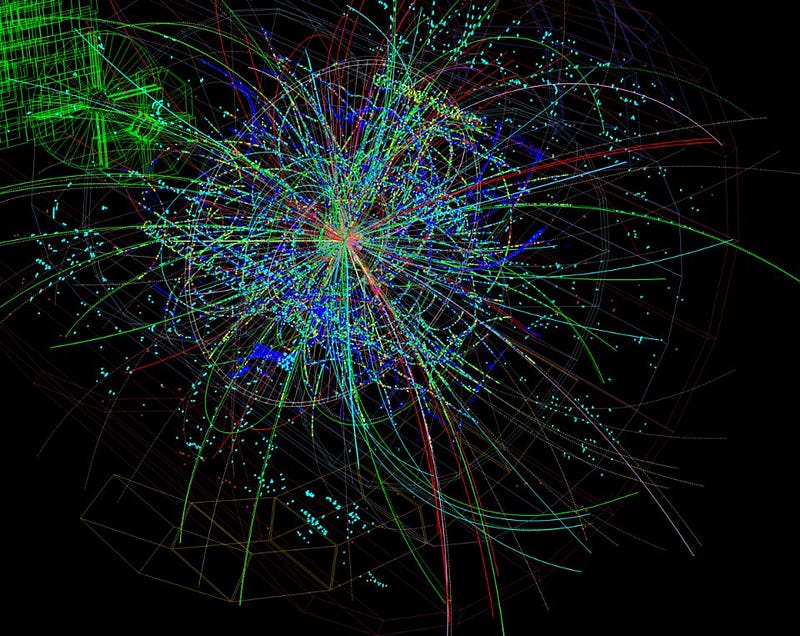
The problem isn’t that these laws couldn’t be overturned by experiment; of course they could. The problem is that physicists have performed so many experiments in so many different ways, so carefully and with such precision verifying them. These conservation laws have been confirmed for every gravitational, mechanical, electromagnetic and quantum interaction ever observed. And now, it’s claimed that an engine, one that relies on nothing more than a simple electromagnetic power source, overthrows all of physics. And the NASA Eagleworks test confirms, in a peer-reviewed paper, that thrust is produced with no discernible reaction for the action observed.
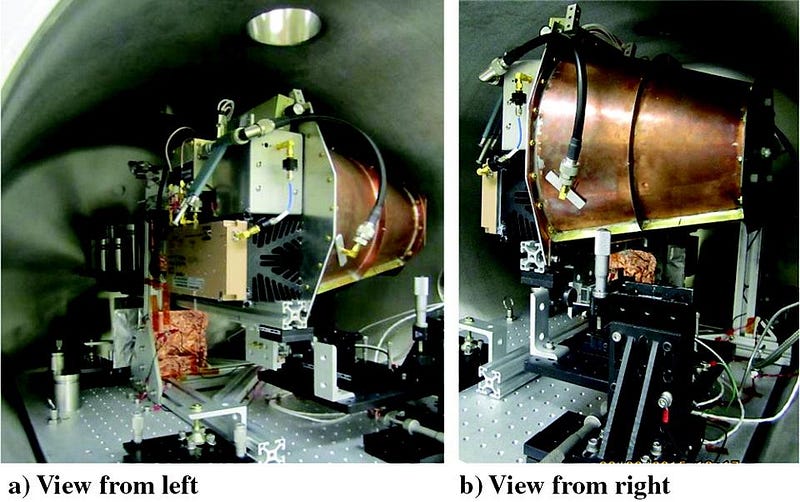
Now, there are some possibilities out there that can save the conservation of momentum. That can save the action/reaction laws. That can save physics as we know it. They include:
- That there is exhaust that simply isn’t being measured, including in the form of electromagnetic radiation. This would mean there is a reaction after all.
- That there’s an electromagnetic field generated as part of the setup, and the change in the momentum of the field balances exactly the change in momentum of the engine. Again, there would be a reaction.
- Or the engineers who performed the test at NASA Eagleworks were incompetent, and either there is a reaction that they missed or the thrust observed isn’t real.
The results are still for very small thrusts of under 100 microNewtons, with large input powers of dozens to hundreds of Watts. If you remember faster-than-light neutrinos, the BICEP2 results of gravitational waves from inflation, claims of cold fusion, perpetual motion or any other set of results that were later overturned with more and better data, you’ll recall that this is far from a slam-dunk. The theoretical claims of how this could work range from easily disprovable to highly speculative, and they all have no evidence except this one engine to show for it.
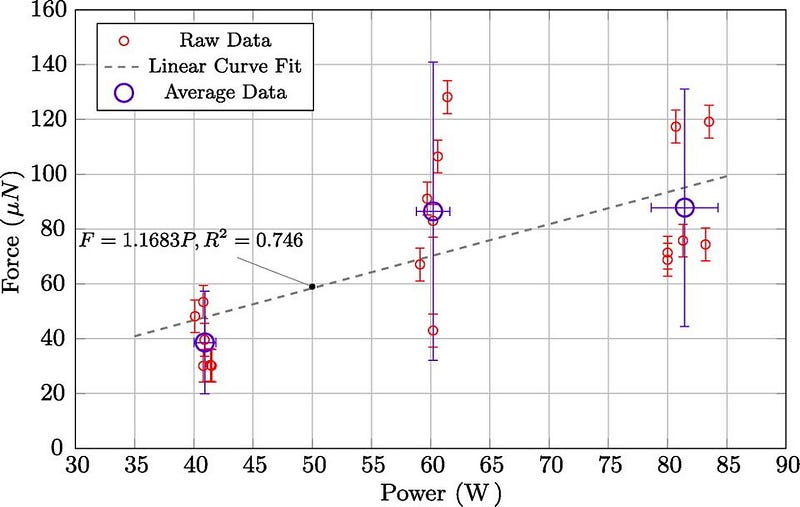
The point isn’t that physics is wrong, nor is the point that the Eagleworks team is wrong. The point is that this is the beginning stages of actual science being done to examine an effect. The most likely outcome is that momentum really is conserved and there’s something funny going on here. For faster-than-light neutrinos, it was a loose cable. For the BICEP2 results, it was an incorrect calibration of galactic gas. For cold fusion, it was a poor experimental setup, and for perpetual motion, it was a scam. No matter what the outcome, there’s something to be learned from further investigation. Whether it’s new physics and a new type of engine results, or whether it’s simpler than that and the effect’s cause simply hasn’t been determined yet, more and better experiments will be the ultimate arbiter. This is why we do the science in the first place.
This post first appeared at Forbes, and is brought to you ad-free by our Patreon supporters. Comment on our forum, & buy our first book: Beyond The Galaxy!





